The ‘‘Buckets’’: Early Observations on the Use of Red and Infrared Light Helmets in Parkinson’s Disease Patients
In summary, our early observations are the first to note the impact of PBM on patients’ signs and symptoms over an extended period, up to 24 months, and lays the groundwork for further development to clinical trial.
OPEN FILEThe influence of low-level laser irradiation on spinal cord injuries following ischemia- reperfusion in rats1
Low level laser therapy was be able to minimize the damage to the rat spinal cord of reperfusion-induced injury.
OPEN FILERole of Low-Level Laser Therapy in Neurorehabilitation
The concept of “wearable” light sources is not far off. Moreover, the particular benefits of LLLT to both the central and peripheral nervous systems suggest that much wider use of LLLT could or should be made in cases of both brain diseases and injuries.
OPEN FILETranscranial Application of Low-Energy Laser Irradiation Improves Neurological Deficits in Rats Following Acute Stroke
These observations suggest that LLLT applied at different locations in the skull and in a rather delayed-phase post stroke effectively improves neurological function after acute stroke in rats.
OPEN FILETRANSCRANIAL LOW-LEVEL LASER (LIGHT) THERAPY IN MICE: TRAMAUTIC BRAIN INJURY AND BEYOND
The beneficial effects in stimulating neurogenesis, synaptogenesis and BDNF after transcranial LLLT suggest it may have wider applications beyond TBI to neurodegenerative diseases such as Alzheimer’s and psychiatric diseases such as major depression.
OPEN FILETreatments for traumatic brain injury with emphasis on transcranial near-infrared laser phototherapy
NIR light in the power range of 10–15 W at 810 nm and 980 nm can safely and effectively treat chronic symptoms of TBI. The clinical benefit and effects of infrared phototherapy on mitochondrial function and secondary molecular events are discussed in the context of adequate radiant energy penetration.
OPEN FILENear infrared Transcranial Laser Therapy applied at Various Modes to Mice Following Traumatic Brain Injury Significantly Reduces Long-Term Neurological Deficits
Our data suggest that non-invasive TLT of mice post-TBI provides a significant long-term functional neurological benefit, and that the pulsed laser mode at 100 Hz is the preferred mode for such treatment.
OPEN FILERetrospective Observational Study and Analysis of Two Different Photobiomodulation Therapy Protocols Combined with Rehabilitation Therapy as Therapeutic Interventions for Canine Degenerative Myelopathy
Conclusions: The data reviewed show significantly slower disease progression—longer survival times—for patients in the PTCL-B group than those in the PTCL-A group or published historical data. Further studies are warranted.
OPEN FILE